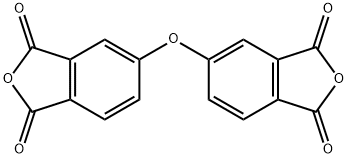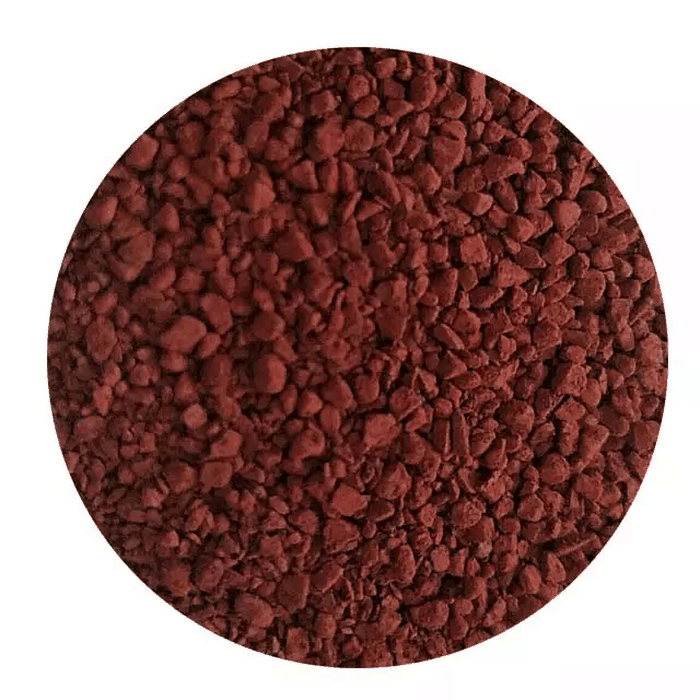3,3',4,4'-Benzophenonetetracarboxylic dianhydride
Synonym(s):4,4′-Carbonyldiphthalic anhydride
- CAS NO.:2421-28-5
- Empirical Formula: C17H6O7
- Molecular Weight: 322.23
- MDL number: MFCD00005923
- EINECS: 219-348-1
- SAFETY DATA SHEET (SDS)
- Update Date: 2024-12-18 14:08:52

What is 3,3',4,4'-Benzophenonetetracarboxylic dianhydride?
Chemical properties
white crystall powder
The Uses of 3,3',4,4'-Benzophenonetetracarboxylic dianhydride
BTDA is important monomer of polyimide, and used for production of polyimide material.
The Uses of 3,3',4,4'-Benzophenonetetracarboxylic dianhydride
Used in the synthesis of polyimides.
The Uses of 3,3',4,4'-Benzophenonetetracarboxylic dianhydride
BTDA polymer fine free-flowing powder suitable for general purposes. BTDA Microfine Micronized powder facilitates mixing in epoxy resins. BTDA ultrapure high-purity, high-assay powder for critical polyimide synthesis.
What are the applications of Application
3,3',4,4'-Benzophenonetetracarboxylic dianhydride (BTDA) is used for:
(1) Synthesis of polyimides
(2) Preparation of cellulose acetate (AC) hydrogels
(3) Curing epoxy powder coatings
(4) Preparation of nanocomposite films
(5) BTDA-formed polyimide/copolymer as dielectric layer for high-performance OFET memory devices
General Description
Benzophenone-3,3′,4,4′-tetracarboxylic acid is formed by hydrolysis, it can be converted to the dianhydride by treating with Ac2O (molar ratio 4 to 1 of acid).The dianhydride is used to synthesize polyimides, which are highly flexible in nature due to the presence of keto and carbonyl groups in the dianhydride molecule. The keto and carbonyl groups subsequently increase the spacing between the imide rings enhancing the solubility and processibility.
Flammability and Explosibility
Non flammable
Purification Methods
The main impurity is the free acid formed by hydrolysis (check for OH bands in the IR). This can be converted to the dianhydride by treating with Ac2O (molar ratio of 4 to 1 of acid), heating at 110-120o for 1.5 to 2hours, cooling to 0—5o and collecting the dianhydride. This is then dissolved in hot dioxane or Me2CO, filtered and cooled to 10—15o. The moisture sensitive solid is collected and dried at 120—130o in vacuo. It has been sublimed at high vacuum. [Faberov et al. J Org Chem USSR 4 153 (English translation) 1968.]
Properties of 3,3',4,4'-Benzophenonetetracarboxylic dianhydride
| Melting point: | 218-222 °C (lit.) |
| Boiling point: | 320°C 5mm |
| Density | 1,57 g/cm3 |
| vapor density | 1.4 (vs air) |
| vapor pressure | <0.1 mm Hg ( 0 °C) |
| refractive index | 1.6380 (estimate) |
| Flash point: | 324 °C |
| storage temp. | Inert atmosphere,Room Temperature |
| solubility | DMF: 0.1 g/mL, clear |
| form | Needles or Crystalline Powder |
| color | Off-white to brown |
| explosive limit | 16% |
| Water Solubility | REACTS |
| Sensitive | Moisture Sensitive |
| λmax | 580nm(CH3CN)(lit.) |
| Sublimation | 220-230 ºC |
| BRN | 761777 |
| Stability: | Hygroscopic |
| NIST Chemistry Reference | Bis-(3-phthalyl anhydride) ketone(2421-28-5) |
| EPA Substance Registry System | Benzophenonetetracarboxylic dianhydride (2421-28-5) |
Safety information for 3,3',4,4'-Benzophenonetetracarboxylic dianhydride
| Signal word | Warning |
| Pictogram(s) |
 Exclamation Mark Irritant GHS07 |
| GHS Hazard Statements |
H319:Serious eye damage/eye irritation H335:Specific target organ toxicity, single exposure;Respiratory tract irritation |
| Precautionary Statement Codes |
P261:Avoid breathing dust/fume/gas/mist/vapours/spray. P264:Wash hands thoroughly after handling. P264:Wash skin thouroughly after handling. P271:Use only outdoors or in a well-ventilated area. P280:Wear protective gloves/protective clothing/eye protection/face protection. P305+P351+P338:IF IN EYES: Rinse cautiously with water for several minutes. Remove contact lenses, if present and easy to do. Continuerinsing. |
Computed Descriptors for 3,3',4,4'-Benzophenonetetracarboxylic dianhydride
| InChIKey | VQVIHDPBMFABCQ-UHFFFAOYSA-N |
3,3',4,4'-Benzophenonetetracarboxylic dianhydride manufacturer
JSK Chemicals
Vasant Chemicals Pvt Ltd
New Products
(S)-3-Aminobutanenitrile hydrochloride 4-Methylphenylacetic acid N-Boc-D-alaninol N-BOC-D/L-ALANINOL Tert-butyl bis(2-chloroethyl)carbamate 3-Morpholino-1-(4-nitrophenyl)-5,6-dihydropyridin- 2(1H)-one Furan-2,5-Dicarboxylic Acid Tropic acid 1-Bromo-3,5-Di-Tert-Butylbenzene S-2-CHLORO PROPIONIC ACID ETHYL ISOCYANOACETATE 2-Bromo-1,3-Bis(Dimethylamino)Trimethinium Hexafluorophosphate 4-IODO BENZOIC ACID 3-NITRO-2-METHYL ANILINE 1-(2,4-DICHLOROPHENYL) ETHANAMINE (2-Hydroxyphenyl)acetonitrile 4-Bromopyrazole 2-(Cyanocyclohexyl)acetic acid 4-methoxy-3,5-dinitropyridine 1-(4-(aminomethyl)benzyl)urea hydrochloride 2-aminopropyl benzoate hydrochloride diethyl 2-(2-((tertbutoxycarbonyl)amino) ethyl)malonate tert-butyl 4- (ureidomethyl)benzylcarbamate Ethyl-2-chloro((4-methoxyphenyl)hydrazono)acetateRelated products of tetrahydrofuran








You may like
-
 Benzophenone-3,3',4,4'-tetracarboxylic dianhydride. 96% 99%View Details
Benzophenone-3,3',4,4'-tetracarboxylic dianhydride. 96% 99%View Details -
 3,3',4,4'-Benzophenonetetracarboxylic dianhydride 98%View Details
3,3',4,4'-Benzophenonetetracarboxylic dianhydride 98%View Details -
 Benzophenone-3,3,4,4-tetracarboxylic dianhydride. 96% CAS 2421-28-5View Details
Benzophenone-3,3,4,4-tetracarboxylic dianhydride. 96% CAS 2421-28-5View Details
2421-28-5 -
 Benzophenone-3,3′,4,4′-tetracarboxylic dianhydride, 99% CAS 2421-28-5View Details
Benzophenone-3,3′,4,4′-tetracarboxylic dianhydride, 99% CAS 2421-28-5View Details
2421-28-5 -
 3,3',4,4'-Benzophenonetetracarboxylic Dianhydride (purified by sublimation) CAS 2421-28-5View Details
3,3',4,4'-Benzophenonetetracarboxylic Dianhydride (purified by sublimation) CAS 2421-28-5View Details
2421-28-5 -
 3,3',4,4'-Benzophenonetetracarboxylic Dianhydride CAS 2421-28-5View Details
3,3',4,4'-Benzophenonetetracarboxylic Dianhydride CAS 2421-28-5View Details
2421-28-5 -
 Benzophenone-3,3',4,4'-tetracarboxylic dianhydride. 96% CAS 2421-28-5View Details
Benzophenone-3,3',4,4'-tetracarboxylic dianhydride. 96% CAS 2421-28-5View Details
2421-28-5 -
 Benzophenone-3,3′,4,4′-tetracarboxylic dianhydride CAS 2421-28-5View Details
Benzophenone-3,3′,4,4′-tetracarboxylic dianhydride CAS 2421-28-5View Details
2421-28-5